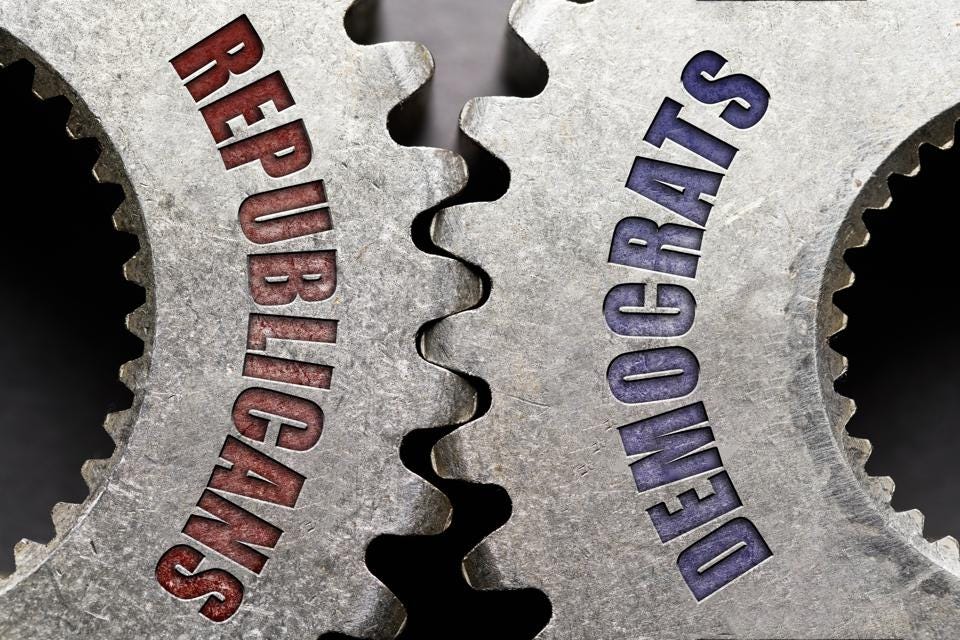By John C. Goodman
Originally posted at Forbes, June 2016
Are Democrats smarter than Republicans? When it comes to health care they might be.
Critics on the right and left have described Obamacare as a “Rube Goldberg” reform. But there is a reason for that. Obamacare doesn’t look the way it does because Democrats like horribly complicated systems. Each part of Obamacare is there because without it the entire reform would collapse.
At the risk of over simplifying, I would describe Obamacare this way:
- Employer mandate.
- Individual mandate.
- Radically different tax subsidies in the individual and group markets.
Within the last several years there have been a half dozen or so Republican alternatives. Most of them mimic the Obamacare approach to health reform, including tax credits in the individual market and a Cadillac plan tax in the group market. They also do this:
- No employer mandate.
- No individual mandate.
- Radically different tax subsidies in the individual and group markets.
Let’s establish one thing up front. Mandates are politically unpopular. During the 2008 election campaign Barack Obama said he was against them. So why does Obamacare have them? Do Democrats know something that Republicans don’t know? Short answer: yes.
Roughly speaking, just about every person who earns a below-average wage gets a larger tax break for insurance purchased in the exchange than for insurance obtained at work. Take a worker earning $10 an hour. He probably pays no income tax, so his marginal tax rate is 15.3% (because of the FICA tax). If the employer pays the premiums for a $10,000 family plan with pre-tax dollars, the implicit tax subsidy is $1,530. But if this same worker can manage to qualify for insurance in the exchange, the government will pay for almost all the premium plus a good chunk of any out-of-pocket expenses as well.
For above-average wage workers the reverse is true. They get a bigger tax subsidy at work. In most cases, they get no subsidy at all in the exchange.
So under today’s system it is in the financial self-interest of roughly half of the 155 million people who get insurance from an employer to seek higher wages instead, and go to the exchange for their health insurance. Employers face similar incentives. For below-average wage employees, the exchange can offer a better deal than they can. Yet if all those people migrated to the exchange in search of larger tax subsidies, the cost of Obamacare would double or triple or go up by even more.
The Obamacare mandates are there to keep that from happening. To keep employers from dropping coverage or not offering it in the first place, Obamacare has an employer mandate. And to make sure that employees don’t turn down their employer’s offer and go to the exchange anyway, Obamacare requires the employees to have insurance and doesn’t allow them access to subsidized insurance in the exchange if they have an affordable offer from their employer.
Is there a middle way? Some Republican plans would deny access to the exchange to employees who have an offer of insurance from an employer, but they don’t tell employers what to do. There are two problems with that. First, what counts as an acceptable employer offer? Does it have to include minimum essential benefits? Does it have to limit the employee’s share of the premium to a certain percent of the employee’s wages? If so, we are right back into the micro management of health insurance that characterizes Obamacare.
But the bigger problem is that employers are not dumb. If they know that their employees can get a better deal in the exchange, they are unlikely to offer health insurance at all.
A related issue is the employer practice of buying individual health insurance for their employees or enabling them to buy it on their own with pre-tax dollars. To stop that, the Obama administration has tried to erect a wall of separation between the individual and the group markets. In fact, if an employer provides pre-tax dollars for individually owned insurance, the potential fine is $100 per employee per day — or $36,500 a year!
There are two problems the Obama administration is trying to avoid. One is double dipping. If employees can use pre-tax dollars (one form of subsidy) to go into the exchange and buy insurance that qualifies for a tax credit (a second form of subsidy) the cost to the system will go through the roof.
But even if there were a way to prevent double dipping (say, by making any employer contribution taxable) we would still have the problem of low-wage workers getting access to highly subsidized insurance in the exchange and the huge budget cost of allowing that to happen.
This is exactly what some Republican proposals would do. They would outlaw double dipping, but they would allow employees access to the system that offers the larger subsidy.
Here is the general principle. Whenever you have two different tax subsidies, people and their employers will always try to reorder their lives in order to obtain the larger subsidy. If you allow that to happen, the budget consequences will be so large that health reform will be completely impractical. The only way to stop it from happening is with kinds of mandates and regulations that Republicans traditionally don’t like.
So is there a way out of all this? Yes.
Equalize the tax subsidies in all markets. Give people the same tax relief regardless of where they obtain their health insurance – at work, in the marketplace or in an exchange. I have written about that elsewhere.
This article was originally posted at Forbes on June 20, 2016.

0 Comments